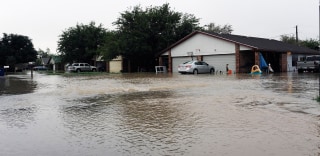
Pelamis platurus, related to the cobra family (Elapidae)
Yellowbelly Sea Snake Carpenter0 Wikipedia.org
................................................................................................................................




| Forest / Wild Fire | USA | [Fort Belknap area] State of Montana |
| EDIS Number | WF-20151211-51205-USA |
|---|---|
| Event type | Forest / Wild Fire |
| Date/Time | December 11 2015 04:22 AM (UTC) |
| Last update | December 11 2015 04:25 AM (UTC) |
| Cause of event | |
| Damage level | Medium |
| Continent | North-America |
|---|---|
| Country | United States of America |
| County / State | State of Montana |
| Area | Fort Belknap area |
| Settlement | |
| Coordinate | 48° 28.950,108° 45.926 |




Moisture & energy from #Patricia could enhance hvy rain threat from TX to AR; up to 1 FOOT+: http://wxch.nl/1M9V0h0

| Biological Hazard | USA | State of California, [Clear Lake] |
Biological Hazard in USA on Wednesday, 14 October, 2015 at 11:47 (11:47 AM) UTC.
| |||||||||||||||
| |||||||||||||||
| Nuclear Event | USA | State of California, [San Onofre nuclear power plant] |
| |||||

 Wildfire burns 22,000 acres near Camp Pendleton
Wildfire burns 22,000 acres near Camp Pendleton Camp Pendleton among Calif. hot spots affected by brush fires
Camp Pendleton among Calif. hot spots affected by brush fires Camp Pendleton fires almost fully contained
Camp Pendleton fires almost fully contained Incredible 'fire tornado' video from Cailfornia
Incredible 'fire tornado' video from Cailfornia Camp Pendleton Fire Forces Evacuations
Camp Pendleton Fire Forces Evacuations Wildfires continue to burn on Marine base
Wildfires continue to burn on Marine base More than 9,000 acres burned around San Diego
More than 9,000 acres burned around San Diego Brush fires break out and spread in northern San Diego County
Brush fires break out and spread in northern San Diego County New fire at Camp Pendleton prompts evacuations
New fire at Camp Pendleton prompts evacuations Wildfires spread in Southern California, San Onofre nuclear power plant evacuated
Wildfires spread in Southern California, San Onofre nuclear power plant evacuatedDue to the social nature of this site, it may contain copyrighted material the use of which has not always been specifically authorized by the copyright owner. We believe this constitutes a ‘fair use’ of any such copyrighted material as provided for in section 107 of the US Copyright Law. In accordance with Title 17 U.S.C. Section 107, the material on this site is distributed without profit, to those who have expressed a prior interest in participating in this community for educational purposes. For more information go to: http://www.copyright.gov/title17/92chap1.html#107. If you wish to use copyrighted material from this site for purposes of your own that go beyond ‘fair use’, you must obtain permission from the copyright owner.
******************************************************************************************
Any materials (ie. graphics, articles , commentary) that are original to this blog are copyrighted and signed by it's creator. Said original material may be shared with attribution. Please respect the work that goes into these items and give the creator his/her credit. Just as we share articles , graphics and photos always giving credit to their creators when available. Credit and a link back to the original source is required.
******************************************************************************************
If you have an issue with anything posted here or would prefer we not use it . Please contact me. Any items that are requested to be removed by the copyright owner it will be removed immediately. No threats needed or lawsuit required. If there is a problem and you do not wish your work to be showcased then we will happily find an alternative from the many sources readily available from creators who would find it amenable to having their work presented to the subscribers of this feed.
Thank you for your time and attention, blessings to all :)
***********************************************************
About Me
|